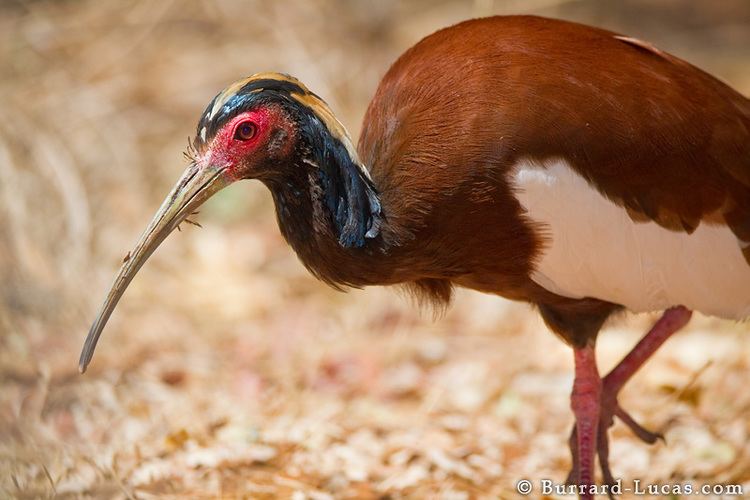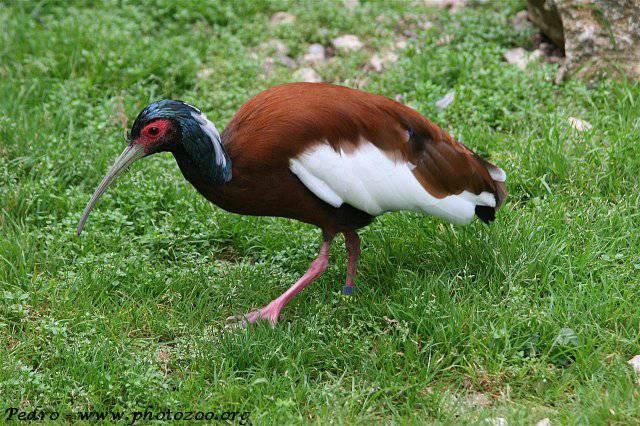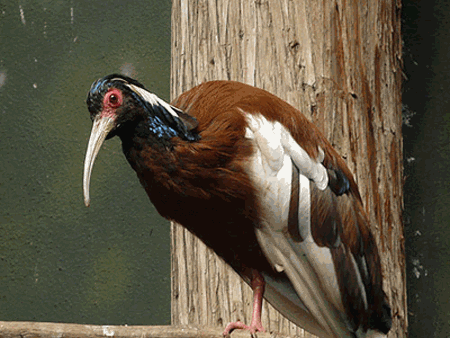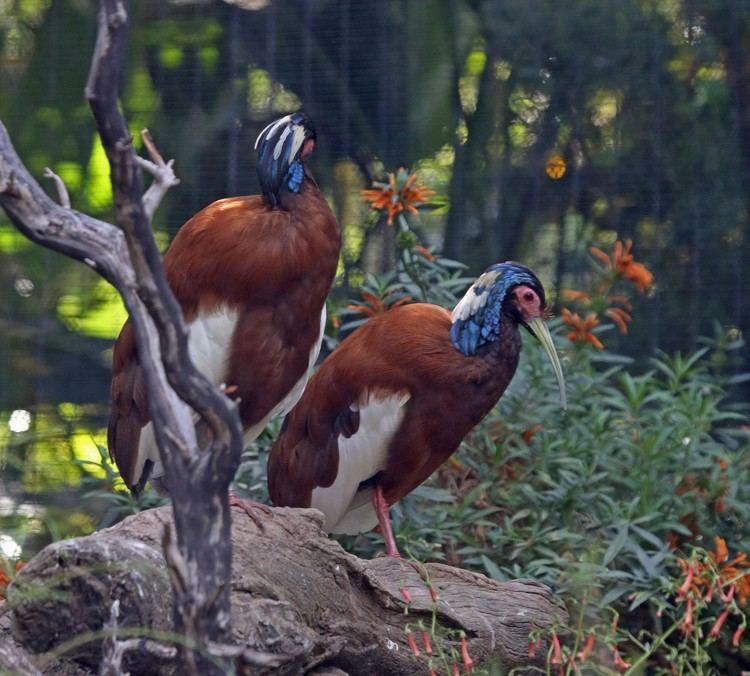Kingdom Animalia Subfamily Threskiornithinae Phylum Chordata Rank Species | Family Threskiornithidae Scientific name Lophotibis cristata Higher classification Lophotibis Order Pelecaniformes | |
 | ||
Genus Lophotibis
L. Reichenbach, 1853 Similar Spot‑breasted ibis, Southern bald ibis, Sharp‑tailed ibis, Wattled ibis, Malagasy sacred ibis | ||
The Madagascan ibis (Lophotibis cristata), also known as the Madagascar crested ibis, white-winged ibis or crested wood ibis, is a medium-sized (approximately 50 cm long), brown-plumaged ibis. It has bare red orbital skin, yellow bill, red legs, white wings and its head is partially bare with a dense crest of green or gloss blue and white plumes on the nape. The Madagascan ibis is the only member of the genus Lophotibis.
Contents

Description

The Madagascan ibis, with a length of 50 cm (20 in), is the largest bird in the Madagascan forest. The head is black and the upper parts are rufous brown. The chin, neck and throat and underparts are dark brown and the wing largely white. Part of the face is naked and red, including round the eye, and the crown and back of the neck bear a crest of long feathers which are black with a metallic sheen. In the subspecies L. c. cristata, the sheen is green and there are flecks of white; in the subspecies L. c. urschi, the throat, neck and crest have a greenish sheen mixed with yellowish-orange, and the body colour is darker chestnut. The iris is brown, the very long beak is horn-coloured and the legs and feet are red.
Distribution and habitat

The Madagascan ibis is endemic to the woodlands and forests of Madagascar at altitudes of up to 2,000 m (6,600 ft). It is found in both primary and secondary forest, including humid forest in the northeast of the island and dry forests in the west and south.
Ecology

Its diet consists mainly of insects, spiders, frogs, reptiles, snails and invertebrates. The female usually lays three eggs in a platform nest made from twigs and branches.
Status

The total population of this ibis is thought to be declining due to ongoing habitat loss, and overhunting in some areas, it being a favourite quarry. The bird is evaluated as being a near-threatened species on the IUCN Red List of Threatened Species.

